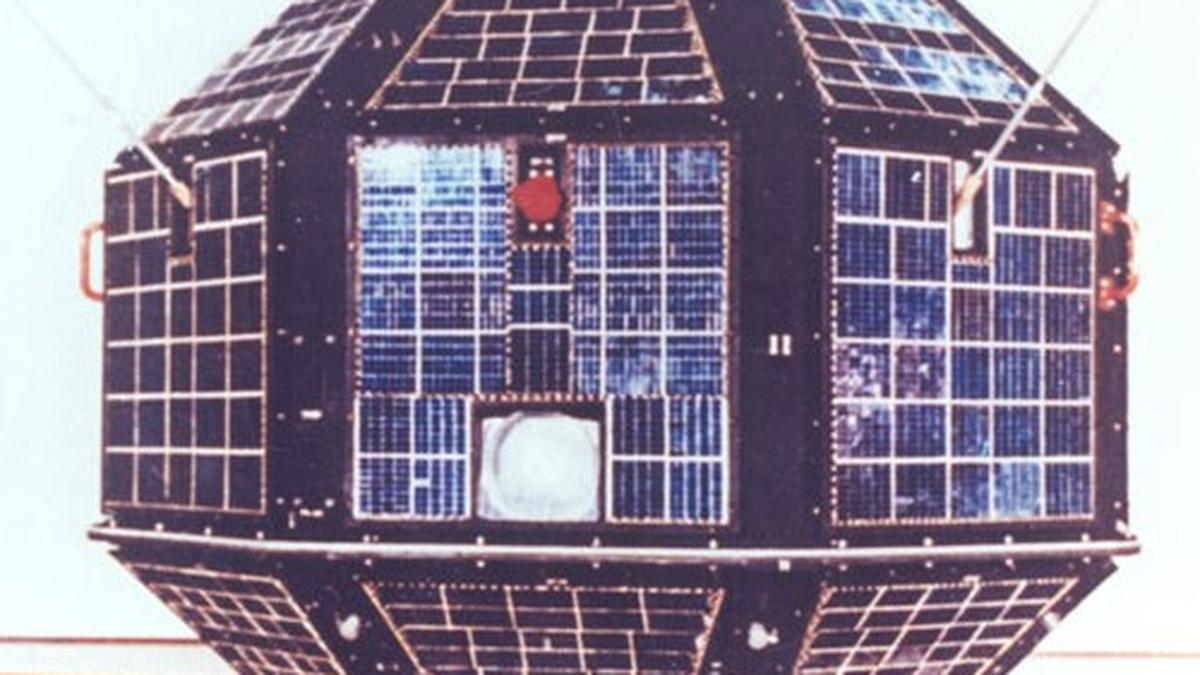
It’s golden jubilee for India’s first satellite Aryabhata
The Hindu
On April 19, 1975 a Kosmos-3M rocket of the then USSR (Union of Soviet Socialist Republics) lifted off from Kapustin Yar in the Astrakhan Oblast in southwestern Russia with the 360-kg Aryabhata on board. The launch of the experimental satellite, built by the ISRO and named after the ancient Indian astronomer, gave the Indian Space Research Organisation (ISRO) the confidence to enter the rarefie
Hardly a week from now, on April 19, the Indian Space Research Organisation (ISRO) will have the occasion to celebrate the golden jubilee of an important milestone: it was on this day 50 years ago that India’s first satellite Aryabhata was launched.
On April 19, 1975 a Kosmos-3M rocket of the then USSR (Union of Soviet Socialist Republics) lifted off from Kapustin Yar in the Astrakhan Oblast in southwestern Russia with the 360-kg Aryabhata on board. The launch of the experimental satellite, built by the ISRO and named after the ancient Indian astronomer, gave the Indian Space Research Organisation (ISRO) the confidence to enter the rarefied world of satellite technology.
ISRO Chairman V. Narayanan told The Hindu that the space agency was planning programmes to mark the occasion. “From that humble beginning, we have grown to the highest levels of maturity in satellite technology. To date, we have conceived and built 131 satellites of various types for a variety of applications. At the moment, we have 55 satellites in orbit,” he said.
There is also an interesting story behind how the satellite’s name came about. It appears that the name was chosen by the then Prime Minister Indira Gandhi from a list of three options. “In the beginning we had not named our satellite. It was Indira Gandhi (then Prime Minister) who chose the name Aryabhata,” the late U.R. Rao, who helmed the Aryabhata project and later went on to become ISRO Chairman, has recalled in the book From Fishing Hamlet to Red Planet: India’s Space Journey (Harper Collins).
The Project Management Board headed by the then ISRO chairman Satish Dhawan had recommended three names: Aryabhata, Mitra, and Jawahar. Obviously they were not randomly picked. Aryabhata was of course the name of an ancient astronomer. While Mitra found a place on the list to signify the deep friendship that India enjoyed with the Soviet Union, Jawahar was shortlisted for the “spirit of independence,” Dr. Rao had written.
Indira Gandhi selected Aryabhata, and the rest is history.
“Aryabhata was quasi-spherical in shape with 26 flat faces measuring 1.59 metres across and 1.19 metres in height,” Space India, an in-house journal of the ISRO noted in its April-June 2000 issue marking the 25th anniversary of the launch. The satellite had solar cells mounted over a surface area of 36,800 sq cm for generating 46 watts of power.

 Run 3 Space | Play Space Running Game
Run 3 Space | Play Space Running Game Traffic Jam 3D | Online Racing Game
Traffic Jam 3D | Online Racing Game Duck Hunt | Play Old Classic Game
Duck Hunt | Play Old Classic Game











